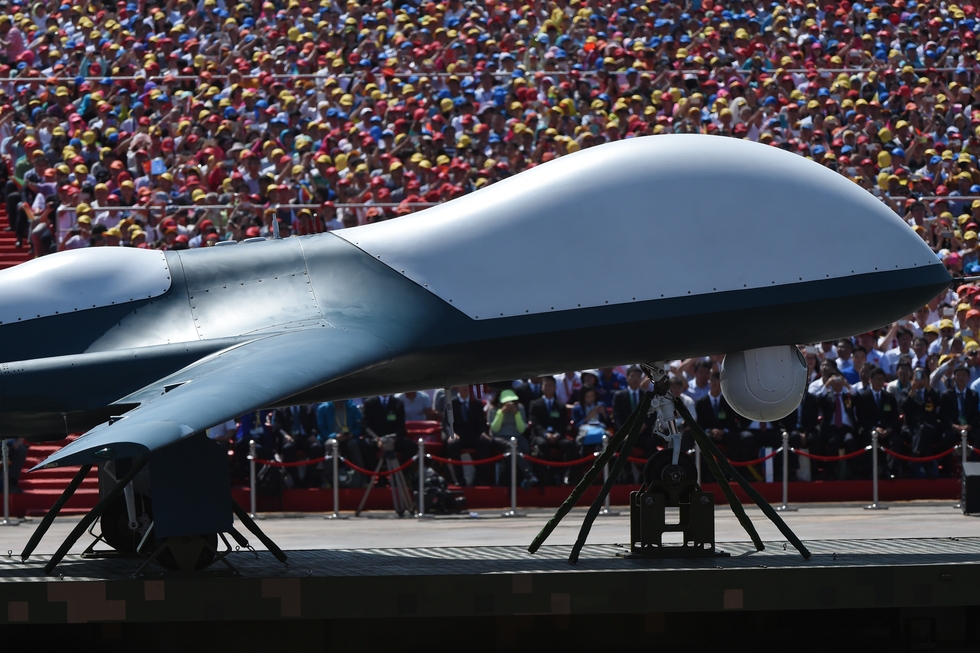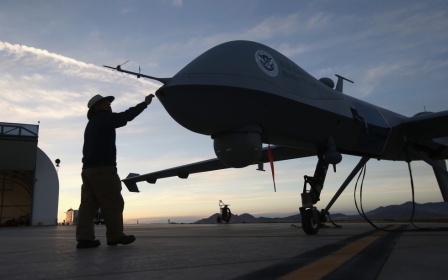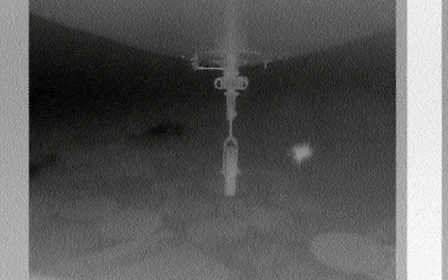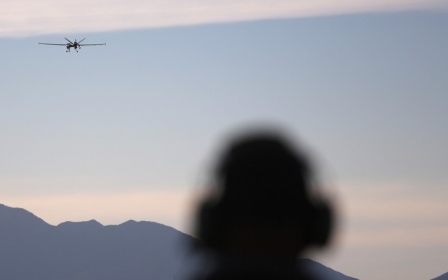Chinese drones: Cheap, lethal and flying in the Middle East

The footage is grainy, but detailed enough to see the target: a silver pickup is parked among sand berms, while three figures stand nearby. Not more than a second later, the vehicle explodes in fire and smoke, sending dust, metal shards and bodies flying across the desert.
The video of the attack in Samara was released by the Iraqi defence ministry, which for effect had added an orchestral score to the destruction of houses, vehicles and alleged Islamic State fighters.
But the weapon system used was not American. It was China’s new hit product: the CH-4 Caihong, or "Rainbow", drone.
The Middle East is no stranger to drones flown by the US, which have killed thousands of people over the last decade.
But more nations are entering the game thanks to a new player in the market: Chinese manufacturers offering cheap hardware with a no-questions-asked sales policy.
China has been aggressively marketing the CH-4, which bears a striking resemblance to the US MQ-9 Reaper and has similar capabilities.
Where the US has refused sales, China has stepped in: Iraq, Saudi Arabia, the UAE and Egypt are now believed to operate variants of Chinese armed drones.
Unlike the US, China has not signed the international Arms Trade Treaty, or ATT, meaning it has fewer restrictions on the sale of drone technology.
The US has attempted to maintain its drone advantage by limiting sales. China has no such qualms.
Iraqi forces display their drone and control technology
According to analysts, the disparity in price and availability has led to governments with questionable human rights records obtaining some of the world's most advanced military technology.
“[Chinese drones] provide a cheaper alternative to US systems, which also aren't available for sale to as many countries due to US limitations,” said Peter Singer, a drone warfare expert from the New America Foundation.
“Countries with less-than-ideal human rights records tend to use their weapons in less-than-ideal human rights manners, whether it’s a drone or a water cannon."
The CH-4 has a range of about 3,500km, can carry precision-guided bombs and missiles and can loiter over target areas for up to 40 hours.
Rasha Abdul-Rahim, an arms control adviser at Amnesty, said that China's non-signatory status to the ATT meant it could ignore any concerns held against buyers.
"If a state knows that the transfer of drones would be used to commit genocide, crimes against humanity or war crimes, the transfer is prohibited," she said.
"Similarly, exporting states must assess if there is a substantial risk that such transfers could be used to commit or facilitate serious violations of international human rights and humanitarian law and must not authorise the transfer if a substantial risk exists.”
So far, Iraq has been the most public of CH-4 operators.
But Saudi Arabia and the UAE are believed to have used the drones in their war in Yemen. While there are not verified reports of drone attacks, evidence of their use includes satellite photographs, as well as images of a drone resembling a CH-4 shot down by Houthi fighters.
Saudi Arabia has been condemned by a host of bodies including the Human Rights Watch, Amnesty International and the European Parliament for apparent indiscriminate attacks on civilians in Yemen.
A panel of UN experts in January called for an international inquiry after finding evidence of hundreds of violations of humanitarian law. Saudi Arabia dismissed the allegations.
The Saudi coalition has also lost four planes in its year of operations - one each from the air forces of Saudi Arabia, the UAE, Bahrain and Morocco.
Such losses would compel the coalition to consider the use of drones.
“There is concern that drones lower the perceived risks of an operation, and therefore lower the barriers to entry for it," said Singer. "Policymakers may be more willing to use drones than risk putting pilots in harm's way."
And while drones offer safety for operators, leaked reports from the US drone programme suggest that up to 90 percent of those killed in drone strikes may be unintended targets, or "collateral damage".
Abdul-Rahim said there was a "substantial risk that drones could be used in Yemen".
"Amnesty International is urging all states to ensure that no party to the conflict in Yemen is supplied – either directly or indirectly – with weapons, munitions, military equipment or technology that would be used in the conflict until they end such serious violations."
China's drone programme is a cheap, easily available alternative to US weaponry
New MEE newsletter: Jerusalem Dispatch
Sign up to get the latest insights and analysis on Israel-Palestine, alongside Turkey Unpacked and other MEE newsletters
Middle East Eye delivers independent and unrivalled coverage and analysis of the Middle East, North Africa and beyond. To learn more about republishing this content and the associated fees, please fill out this form. More about MEE can be found here.




